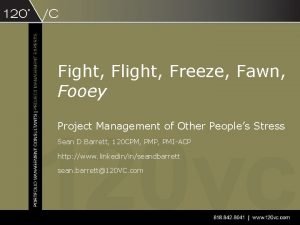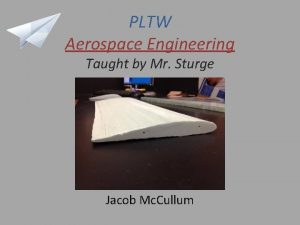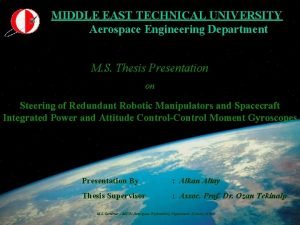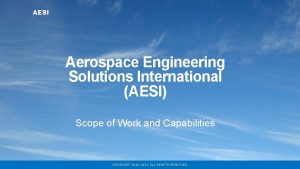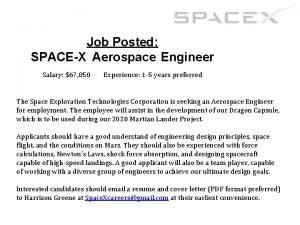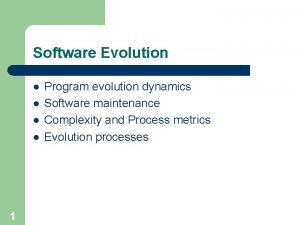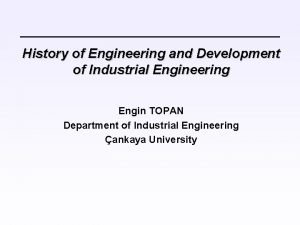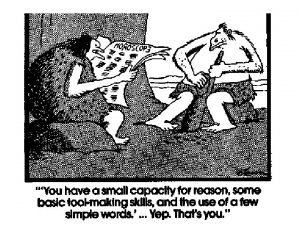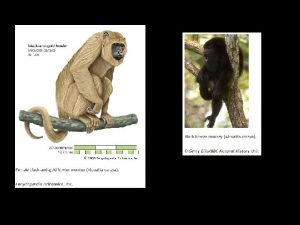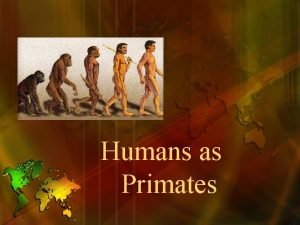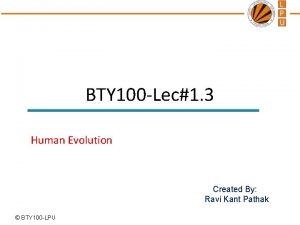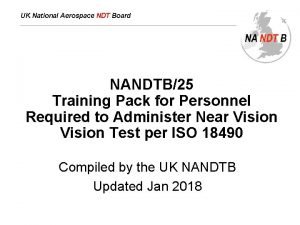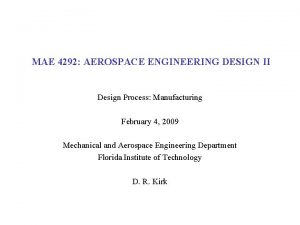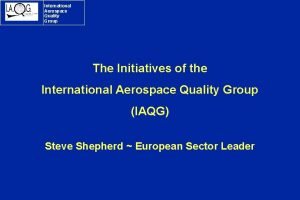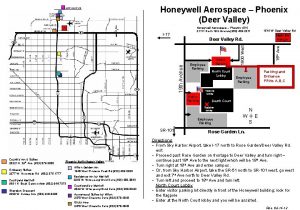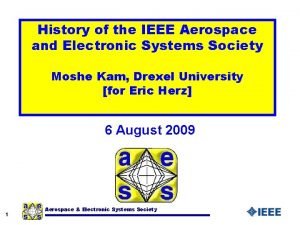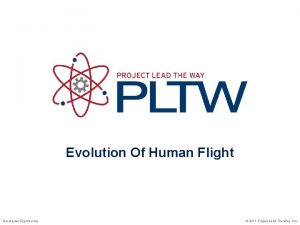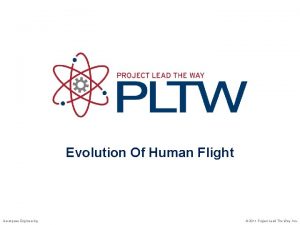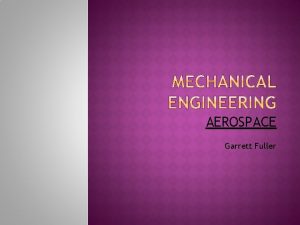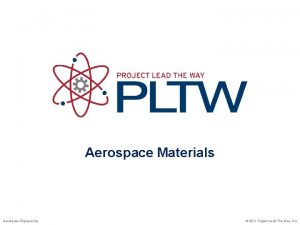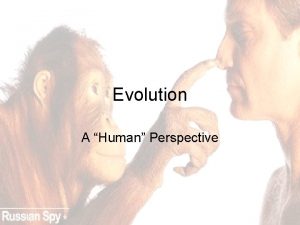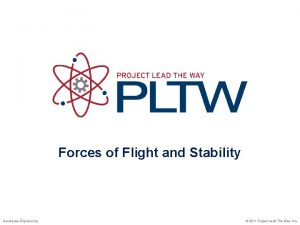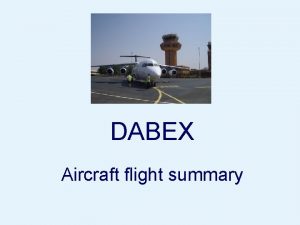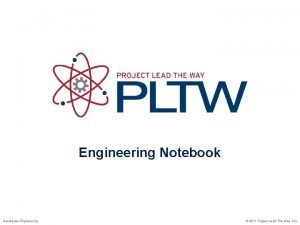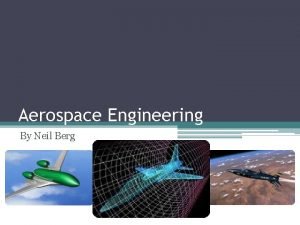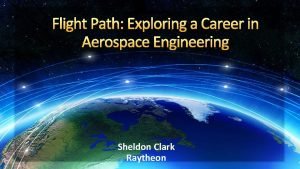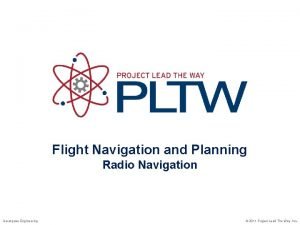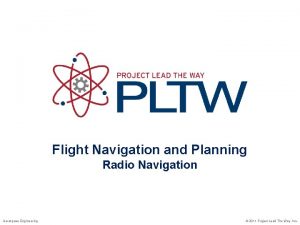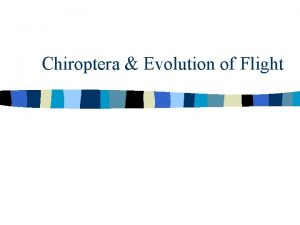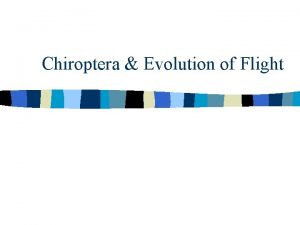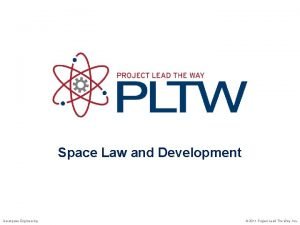Evolution Of Human Flight Aerospace Engineering 2011 Project




















- Slides: 20

Evolution Of Human Flight Aerospace Engineering © 2011 Project Lead The Way, Inc.

Why Human Flight? The desire to fly is an idea handed down to us by our ancestors who. . . looked enviously on the birds soaring freely through space. . . on the infinite highway of the air. ~ Wilbur Wright

Aerospace Engineering • How did we progress? • Applying science, technology and math through engineering

Early Aerospace Engineering • Creative thinking is crucial • Leonardo da Vinci (Lived 1452 -1519) • Factors such as technology prevented the idea from becoming reality 600+ years ago Drawing of a Flying Machine Model of a Flying Machine

Lighter Than Air • Designing and flying a lighter than air vehicle was an important step • Montgolfier brothers, 1782 • What inspired lighter than air flight? – Rising smoke

Heavier Than Air Vehicles • Orville and Wilbur Wright flew the Wright Flyer on December 14, 1903 – Flew 120 feet in 12 seconds @ 6. 8 mph • Built on concepts from others – Horizontal and vertical surfaces – Elements of wing design

Aerospace Engineering Growth • In one century human flight progressed from a flight of 6. 8 mph to thousands of mph for aircraft and tens of thousands mph for spacecraft • How? – STEM • • Science Technology Engineering Math – Image, design, test, fail, learn, try again

Commercial Aviation • Catalysts for growth – Legislation – Competition and fame • Charles Lindbergh – First non-stop crossing of Atlantic ocean (1927) – Won the Orteig Prize as result • Amelia Earhart – First woman non-stop crossing of Atlantic ocean (1932) – Need for fast transportation • Mail delivery • Paying passengers

Military • Word War I through start WWII – Engineers developed: • More efficient aircraft • Better engines • World War II – Demand for aircraft was extreme – Advances in aerospace engineering and manufacturing capability made this possible • Aircraft performance • Navigation aids • RADAR

Increasing Performance • Supersonic flight – Aerospace engineers continued to learn – Captain Chuck Yeager flew Mach 1. 06 (~700 mph @ 43, 000) in 1946

Continued Development • Commercial aircraft • Personal general aviation aircraft • Sport such as hang gliders

Rotorcraft • Leonardo da Vinci helicopter concept circa 1480 • Igor Sikorsky engineers wide scale production of helicopters in 1944 • Engineer to design, test, fail, improve

Space Flight • Rocketry – Chinese credited as using in 1, 232 AD based on development of black powder. – Russian space scientist Tsiolkovsky developed equations in 1903 to reach space

Space Flight • Rocketry – American Robert Goddard • Considered the father of modern rocket propulsion • First liquid fueled rocket launch in 1926

Space Race • Competition Drives Accomplishment – United States and Soviet Union (Russia) space race • Similar to Lindbergh crossing the Atlantic to win a prize in 1927 • First Satellite is put in orbit by Soviet Union in Oct, 1957 • First animal in space by Soviet Union in Nov, 1957 • United States successfully launched its first Satellite (Explorer I) in Jan, 1958 • US passes the National Aeronautics and Space Act creating NASA in Oct, 1958

Space Race • Competition Drives Accomplishment – US and Soviet Union race to space • President Kennedy proclaims in 1961 that the US should commit to landing on moon within the decade • How can that be done? • That’s what the US needed to figure out! • Nine years of intense engineering, failure and learning

Space Race • America won the race to the moon • Neil Armstrong stepped on the moon July 20, 1969 • Success through determination

Space • Engineering is foundation for continued exploration

Space Competition • Competition Drives Accomplishment – Inspired by • Lindbergh crossing Atlantic to win a prize in 1927 • US and Soviet Union (Russia) space race – X Prize Foundation series of competitions • Ansari XPRIZE – $10 M to build and fly a three-passenger vehicle 100 km into space twice within two weeks. • Google Lunar XPRIZE • Northrop Grumman Lunar Lander X CHALLENGE

Aerospace Engineering • What’s next? • Apply science and math through engineering
 Sutterhe
Sutterhe Pltw aerospace engineering
Pltw aerospace engineering Metu aerospace engineering
Metu aerospace engineering Aerospace engineering solutions
Aerospace engineering solutions Mipt aerospace engineering
Mipt aerospace engineering Spacex aerospace engineer starting salary
Spacex aerospace engineer starting salary Program evolution dynamics
Program evolution dynamics Industrial engineering timeline
Industrial engineering timeline Homo erectus ppt
Homo erectus ppt Dryopithecus human evolution
Dryopithecus human evolution Human evolution
Human evolution Human evolution
Human evolution Human evolution
Human evolution Primates characteristics
Primates characteristics Kpcofgs mnemonic device
Kpcofgs mnemonic device Human evolution
Human evolution National aerospace solutions
National aerospace solutions Aerospace design process
Aerospace design process International aerospace quality group
International aerospace quality group Honeywell aerospace phoenix
Honeywell aerospace phoenix Ieee transactions on aerospace and electronic systems
Ieee transactions on aerospace and electronic systems
